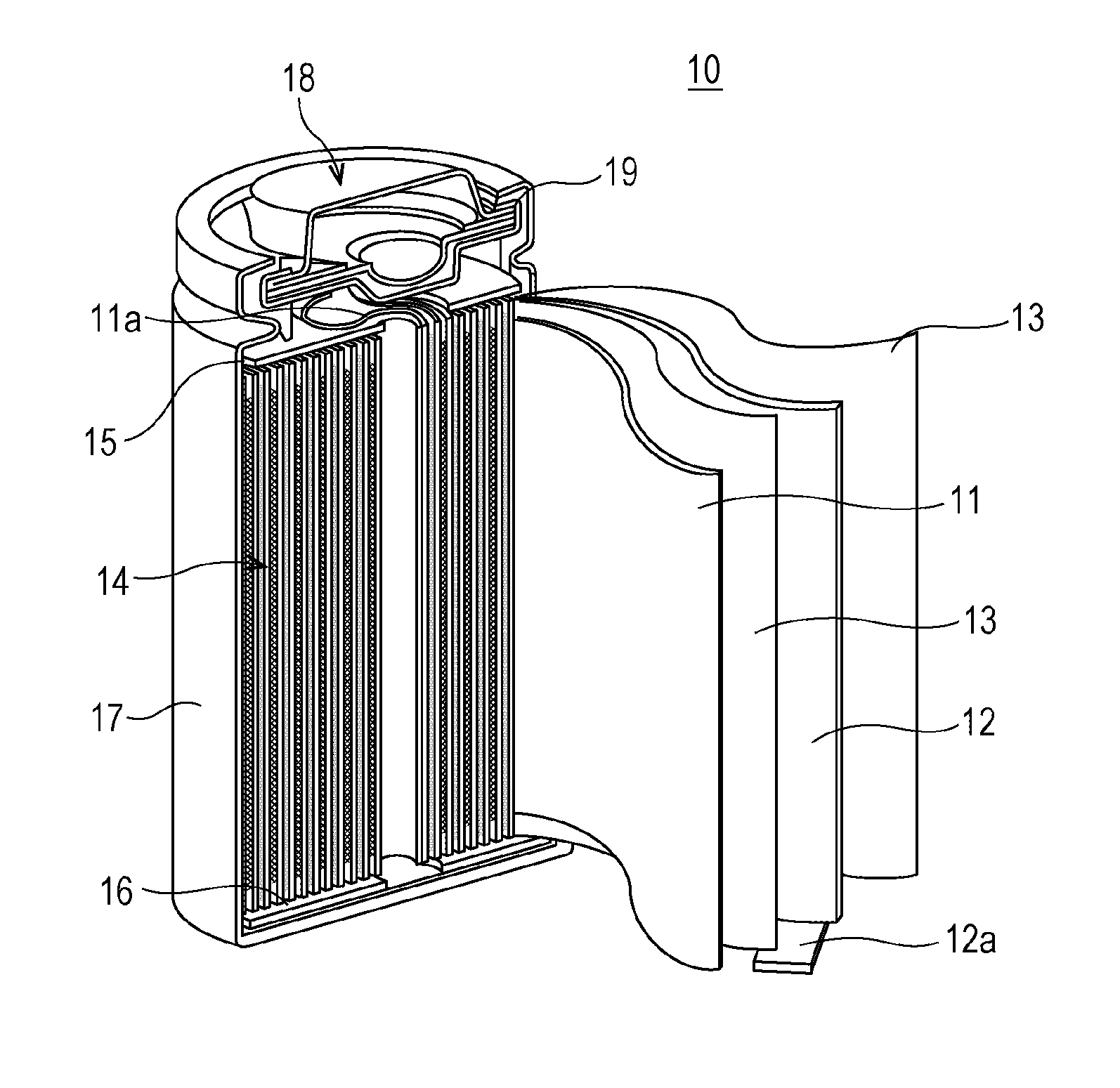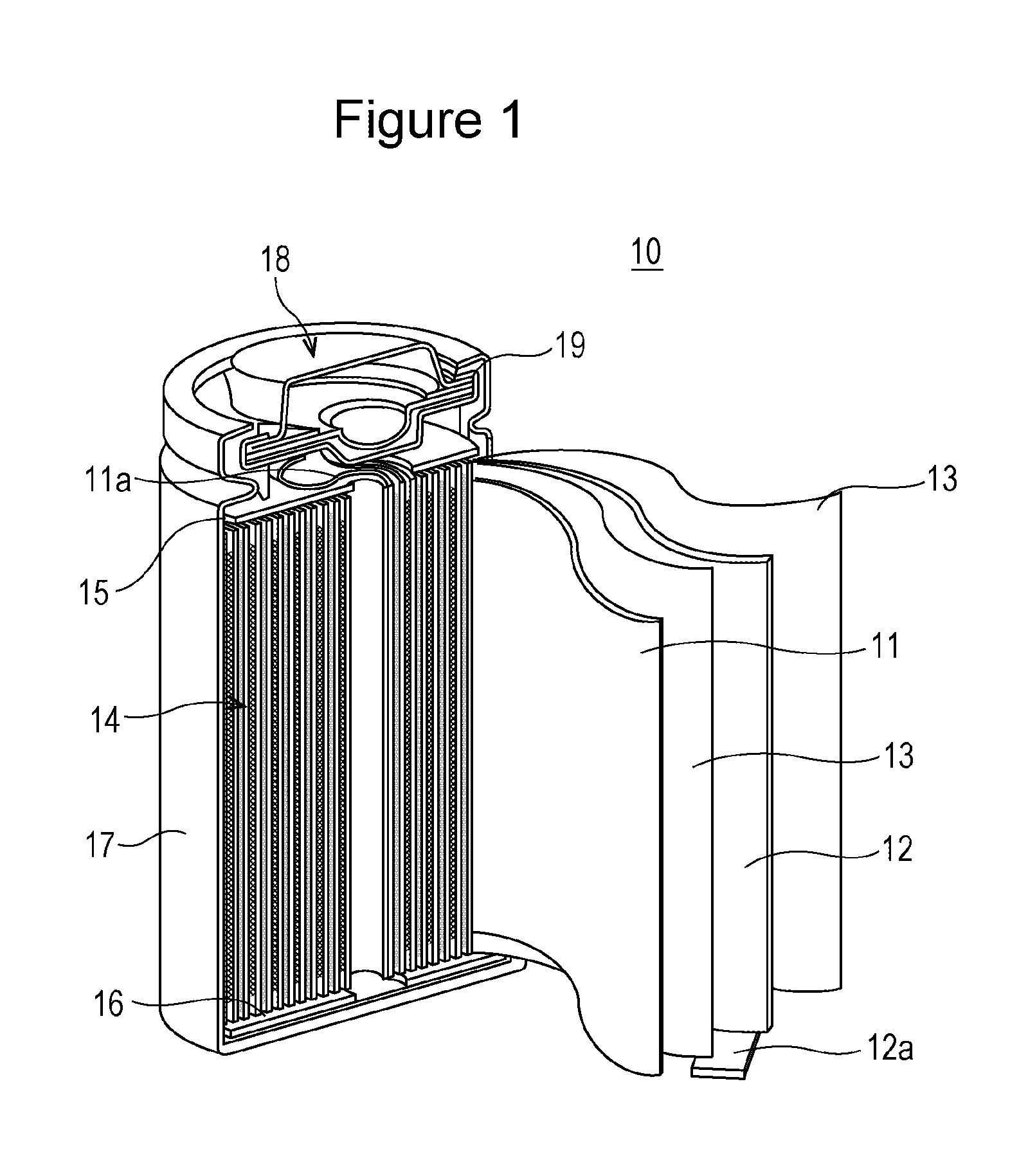Nonaqueous electrolyte secondary battery
a technology of nonaqueous electrolyte and secondary batteries, which is applied in the direction of batteries, cell components, electrochemical generators, etc., can solve the problems of reducing the retention capacity of discharge after charging storage and the occurrence of a decrease in the charging storage characteristics, so as to prevent an increase in internal resistance
- Summary
- Abstract
- Description
- Claims
- Application Information
AI Technical Summary
Benefits of technology
Problems solved by technology
Method used
Image
Examples
experiment example 1
[0015]Hereinbelow, there will be described a specific method for producing a nonaqueous electrolyte secondary battery of Experiment Example 1 of the invention.
[Preparation of Positive Electrode Plate]
[0016][Ni0.35Mn0.30Co0.35](OH)2 prepared by a coprecipitation method and Li2CO3 were mixed together in a prescribed ratio and the mixture was heated at 900° C. to form lithium nickel cobalt manganese composite oxide represented by Li1.06Ni0.33Mn0.28Co0.33O2. 1000 g of the lithium nickel cobalt manganese composite oxide particles were added to 3 L of pure water, and the mixture was stirred. Next, a solution of 4.58 g of erbium nitrate pentahydrate was added thereto together with an appropriate amount of a 10 mass % aqueous sodium hydroxide solution so that the solution containing the lithium nickel cobalt manganese composite oxide would have a pH of 9. Next, the liquid was suction filtered, and the residue was washed with water and was dried by heat treatment in the air at 300° C. for 5 ...
experimental example 2
[0021]In Experiment Example 2, a nonaqueous electrolytic solution was prepared in the same manner as in Experiment Example 1, except that the CHB used as the aromatic compound in the nonaqueous electrolytic solution of Experiment Example 1 was replaced by 3-phenylpropyl acetate (PPA). The potential scanning test was performed in the same manner as in Experiment Example 1, and the oxidative decomposition potential for PPA was found to be about 4.8 V vs. Li / Li+. A nonaqueous electrolyte secondary battery of Experiment Example 2 was fabricated in the same manner as in Experiment Example 1, except that the electrolytic solution described above was used.
experimental example 3
[0022]In Experiment Example 3, a nonaqueous electrolyte secondary battery of Experiment Example 3 was fabricated in the same manner as in Experiment Example 1, except that the aromatic compound used in the nonaqueous electrolytic solution of Experiment Example 1 was excluded.
PUM
 Login to View More
Login to View More Abstract
Description
Claims
Application Information
 Login to View More
Login to View More - R&D
- Intellectual Property
- Life Sciences
- Materials
- Tech Scout
- Unparalleled Data Quality
- Higher Quality Content
- 60% Fewer Hallucinations
Browse by: Latest US Patents, China's latest patents, Technical Efficacy Thesaurus, Application Domain, Technology Topic, Popular Technical Reports.
© 2025 PatSnap. All rights reserved.Legal|Privacy policy|Modern Slavery Act Transparency Statement|Sitemap|About US| Contact US: help@patsnap.com


